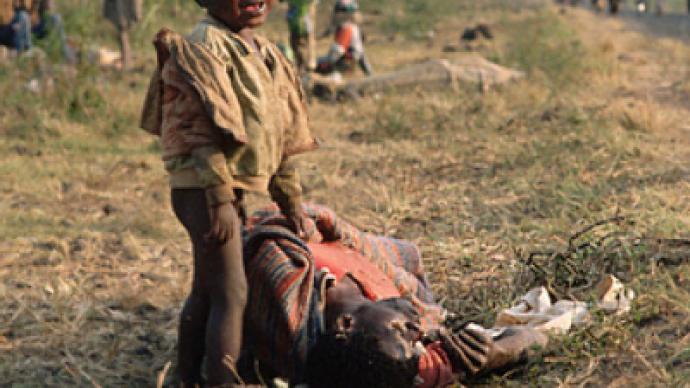Nasty competitors may steal cholera’s spotlight

Cholera is the latest mainstream evidence of the wretched conditions in Zimbabwe. But when the fog of the cholera epidemic clears, the world will find that Zimbabwe’s medical crisis is a beast with many vile faces.
“Dealing with cholera is different from other emergencies,” Pia Engebrigtsen a Medecins San Frontieres (MSF) nurse said. Cholera is a quick killer so “you know lives will soon be lost.”
This, and the fact that terminal evidence has spilled across the borders, are two primary reasons that cholera has garnered so much attention. However, more sly medical assassins are at work in Zimbabwe threatening to wreck long-lasting and far-reaching havoc.
Physicians for Human Rights (PHR) revealed an array of nutrition-related issues.
Speaking on United Nations Radio, Richard Sollom of PHR, who visited Zimbabwe, said, “We saw evidence of malnutrition…I believe that malnutrition is really going to be over the next several months a major health issue.”
Scavenging
Food and water shortages push Zimbabweans to make extreme and desperate choices. Those choices are making rare conditions more common and existing conditions worse.
The 200 cases of human anthrax reported between November and December by the World Health Organization (WHO) are a prime example.
Anthrax is a common animal disease in Zimbabwe but human infections are rare since it is not customary to eat carcasses. However, these cases and the eight resulting deaths were linked to desperate people eating and feeding their children dead, contaminated cattle and goats.
These hunger-induced anthrax cases stayed below the radar.
“Malnutrition is very political,” a nurse told PHR. “We are not supposed to have hunger in Zimbabwe. So even though we see it, we cannot report it.”
“In Epworth, MSF has seen a doubling of children on our malnutrition program in December and again in January,” the organization reported. But they have been stopped from conducting a nutritional assessment.
“The Mugabe regime is trying hard to suppress this information,” Sollom said
But, in a country with a non-existent healthcare system the effects will expose themselves, especially when 15% of the adult population has HIV/AIDS.
Food and Drugs
“Patients living with HIV/AIDS are especially vulnerable to food insecurity,” according to PHR. “They are prone to both diarrhoea and wasting that can be exacerbated by poor nutrition.”
Furthermore, proper nutrition is necessary for antiretroviral treatment. Without food, a person experiences the harshest effects of the medication but gains the least benefits from it.
MSF noted a clear increase in people defaulting on treatment when President Mugabe stopped food distributions. This report is consistent with others that found that hungry people are less likely to take HIV/AIDS medication.
PHR further reported patients selling their medication to buy food and noted that having to choose is especially deadly for patients with AIDS since interruptions can lead to rapid health declines and drug-resistant organisms.
When Drugs Don’t Work
Drug-resistant viruses are a growing concern among the international health community.
According to Dr. Chris Beyrer of John Hopkins University, poor nutrition is not the only threatening cause.
Due to inconsistent availability of drugs, HIV/AIDS patients are often forced to take whatever is available. Beyrer says regimens are switched sometimes as often as every two weeks–a definite risk for drug resistance.
To make matters worse, HIV/AIDS patients are prone to tuberculosis. But, according to PHR, the tuberculosis program has essentially shut down. “In December, the National TB lab had one staff person.”
Since there is no data collection on tuberculosis cases, no one knows how many infections there are or what strains are spreading across the country. But international health officials are expressing growing concerns.
Certain strains of drug-resistant tuberculosis are almost incurable and extremely fatal. Southern Africa has hosted such strains before.
The Larger Threat
Between three and four million Zimbabweans have fled to other countries and commercial sex has exploded at the borders.
International health organizations warn that Zimbabwe’s medical disaster threatens to spread nasty consequences throughout the region.
The appearance of rare and mutating diseases could reverse the progress of several nations’ health programs.
Michelle Smith for RT












